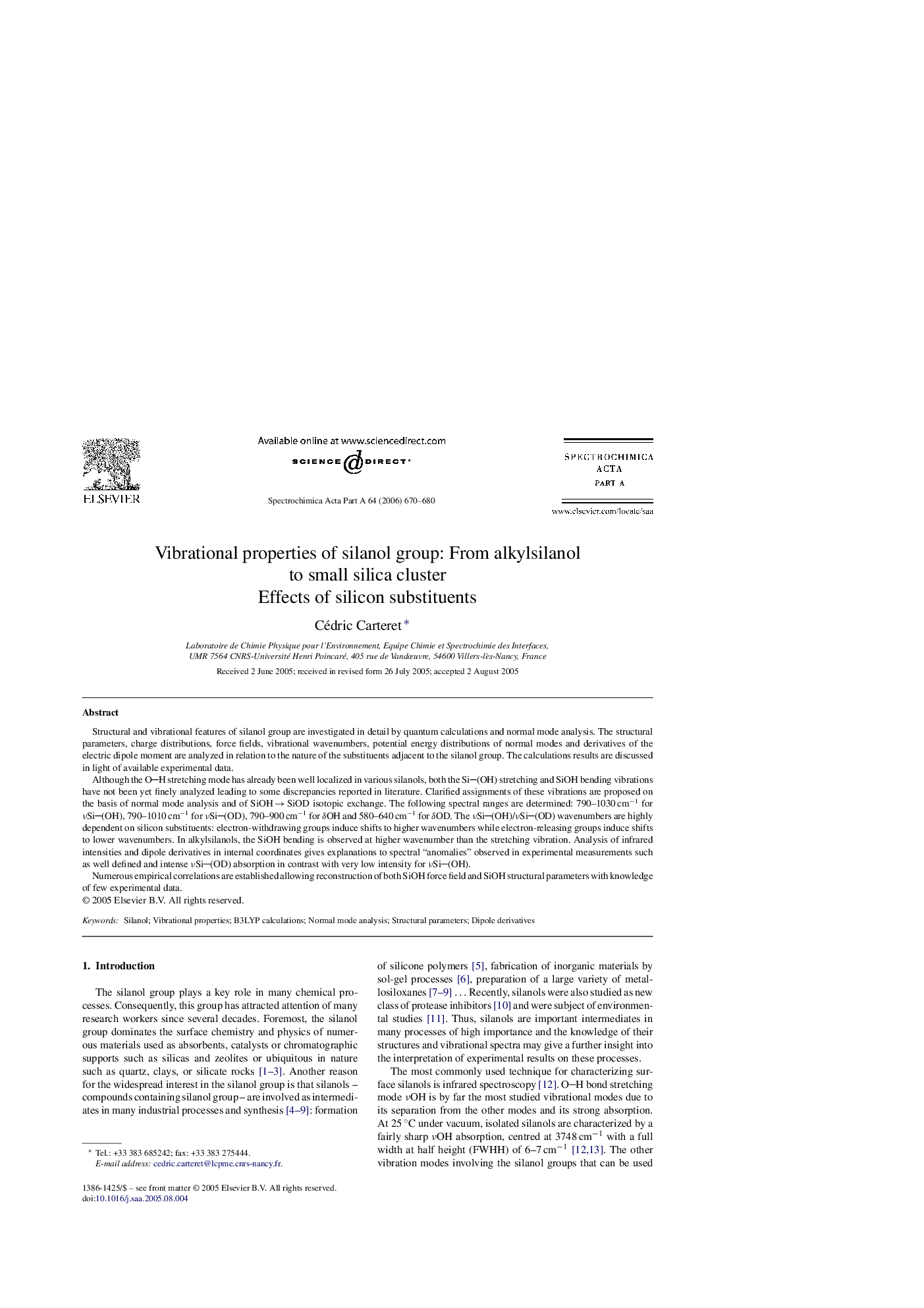| Article ID | Journal | Published Year | Pages | File Type |
|---|---|---|---|---|
| 1236431 | Spectrochimica Acta Part A: Molecular and Biomolecular Spectroscopy | 2006 | 11 Pages |
Structural and vibrational features of silanol group are investigated in detail by quantum calculations and normal mode analysis. The structural parameters, charge distributions, force fields, vibrational wavenumbers, potential energy distributions of normal modes and derivatives of the electric dipole moment are analyzed in relation to the nature of the substituents adjacent to the silanol group. The calculations results are discussed in light of available experimental data.Although the OH stretching mode has already been well localized in various silanols, both the Si(OH) stretching and SiOH bending vibrations have not been yet finely analyzed leading to some discrepancies reported in literature. Clarified assignments of these vibrations are proposed on the basis of normal mode analysis and of SiOH → SiOD isotopic exchange. The following spectral ranges are determined: 790–1030 cm−1 for νSi(OH), 790–1010 cm−1 for νSi(OD), 790–900 cm−1 for δOH and 580–640 cm−1 for δOD. The νSi(OH)/νSi(OD) wavenumbers are highly dependent on silicon substituents: electron-withdrawing groups induce shifts to higher wavenumbers while electron-releasing groups induce shifts to lower wavenumbers. In alkylsilanols, the SiOH bending is observed at higher wavenumber than the stretching vibration. Analysis of infrared intensities and dipole derivatives in internal coordinates gives explanations to spectral “anomalies” observed in experimental measurements such as well defined and intense νSi(OD) absorption in contrast with very low intensity for νSi(OH).Numerous empirical correlations are established allowing reconstruction of both SiOH force field and SiOH structural parameters with knowledge of few experimental data.
